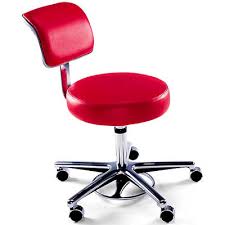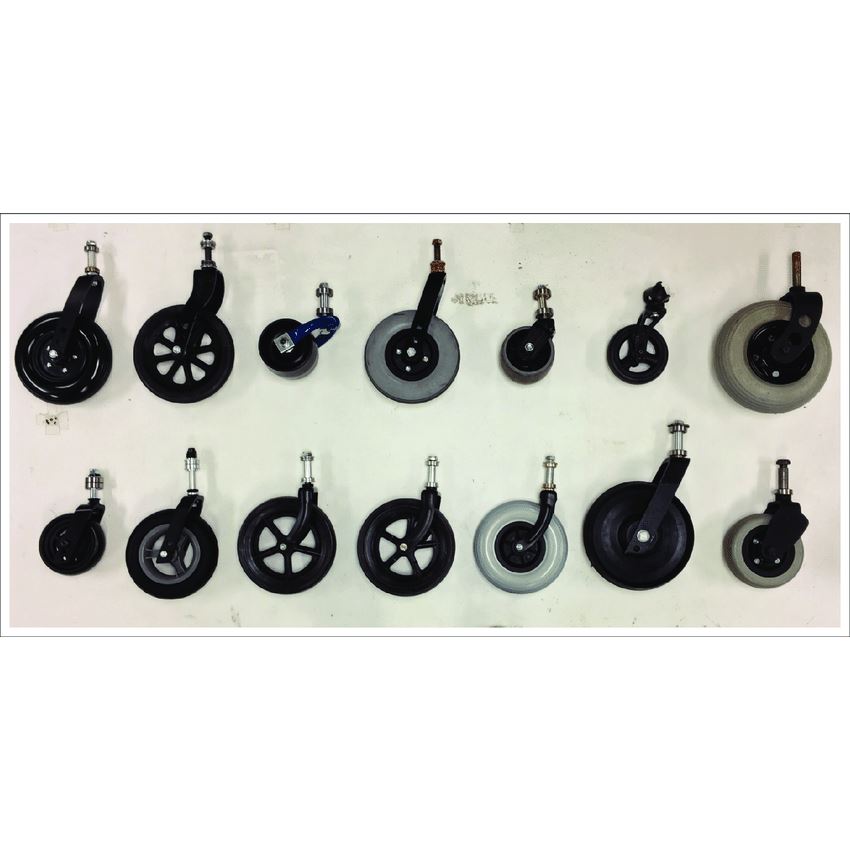What Are the Pros and Cons of Different Caster Designs?
Whether you’re trying to transport heavy cargo at work or simply looking for an office chair that moves the way you want it to, choosing the right caster design can make all the difference. Different caster designs have different benefits and drawbacks that make them suited for environments from offices to industrial workplaces; the trick is to find out which caster best fits your needs. Here’s a look at some of the pros and cons of different caster designs:

The dual wheel casters are one of the most popular caster types, as they have two wheels as opposed to the single wheel caster.
Pros
· They can handle more weight with a lower overall height, making them more stable than single wheel.
· The load they carry is spread across two wheels, reducing the pressure on the floor and making them less likely to damage the floor.
· They’re easier to change directions with, as the two wheels provide differential action where they turn at different speeds.
Cons
· They’re a more expensive caster design than single wheel caster.

Single wheel casters are a very common caster design, known for having one wheel as opposed of two.
Pros
· They’re a cheaper option than the dual caster, and may be the more economical choice for most office chairs and other light loads.
Cons
· If you’re looking to carry a heavier load, the single wheel caster cannot carry nearly as much as a dual caster.
· They’re more difficult to swivel when fully loaded, and the swivelling wheel can be known to scrub on the floor.

Hooded casters are known for having a hood over the wheel.
Pros
· The hood hides dirt and dust that can collect on the tread, making the caster appear cleaner.
Cons
· If used in a home, the hood can easily snag and get caught on a rug or anything lying on the ground like a blanket.
Euro Caster

Euro casters have a European design characterized by a contemporary look that makes the caster and base look like they’re one unit.
Pros
· They’re a more stylish choice for your office or home.
Cons
· They’re more expensive, and not because of any practical value.
Ball Caster

Ball casters have ball-shaped wheels that often come in brass or metal.
Pros
· They’re used often in homes or offices to move furniture, and are unique in style.
· They can come in a bunch of different varieties, i.e. rigid or swivel, hooded or unhooded, with or without a brake.
Cons
· They don’t come in dual wheel and cannot carry as heavy a weight.
Safety-Brake Caster

Safety-brake casters are typically used for office chairs, containing brakes that get triggered by the weight of the chair and get released when you sit down.
Pros
· Chairs with safety-brake casters will stay in place when you stand up, but will allow you to move the chair around while you’re sitting.
Cons
· The back and forth of locking and unlocking can make it difficult to move the chair without actually sitting in it.
Reverse-Brake Caster

Reverse-brake casters are the opposite of safety-brake casters, with the brakes triggered by weight and released when no weight is applied.
Pros
· If you’re looking for a chair that doesn’t move when you sit in it but is capable of being transported when you aren’t, this is a stable caster choice.
Cons
· Again, the back and forth of locking and unlocking makes it difficult to know when to move the chair and can cause accidents for people unaccustomed to reverse-brake casters.
Locking Caster

Locking casters have a brake that can be locked and unlocked.
Pros
· They’re incredibly safe when used for worktables or anything with dangerous equipment that needs a stable surface that won’t move.
Cons
· If you’re looking to be able to frequently move something, a locking caster can be annoying to have to repeatedly lock and unlock manually.
Cleanable Caster

Cleanable casters can be taken apart and easily cleaned.
Pros
· They won’t accumulate dust and grime and will help keep your floors cleaner.
· They’re a great choice for places that need to maintain high standards of cleanliness such as hospitals or restaurants.
Cons
· They aren’t capable of carrying as heavy a load and are a more expensive choice.
Electrostatic Discharge (ESD) Casters & Glides

ESD casters and glides prevent the buildup of static electricity.
Pros
· The dissipation of static electricity is a huge benefit for hospital mobile equipment that could be electrically damaged.
Cons
· They are a much more expensive choice.
Industrial Caster

Industrial casters are one of the oldest caster designs on the market, typically used in industrial plants.
Pros
· They’re a cheaper option.
· They can be easily rolled on concrete floors and can transport large, heavy objects.
Cons
· They are not a good fit for an office or a home, and don’t have great swiveling capabilities in small spaces.
Glides

Glides are little discs that attach to the bottom of to help slide the object around without damaging the floor.
Pros
· They can help keep an object such as an end table in place without sliding around on its own.
· They protect the floor, especially when made out of a material such as felt.
· They make little to no noise when used, unlike casters, which can create a rolling sound.
Cons
· They’re harder to use to move furniture longer distances.
· The materials used in glides are not as durable: felt glides wear out easily, and metal glides can rust.
· Plastic glides can cause streaks on the floor.
Now that you know a little more about each type of caster and the pros and cons of each, you’ll be able to decide whether or not you want to go for something stylish for the office, like a euro or ball caster, or something practical for the factory, such as an industrial or locking caster. No matter what your needs are, there is a caster that’s right for you.
Below video is about Pros & Cons of Pneumatic Wheel Casters.
From Youtube
Leave a comment!

